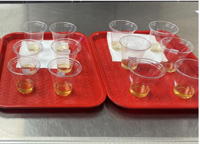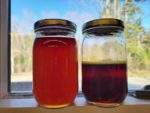
The third year report of the NNYADP-funded Value of Manure report prepared by a team of Cornell Nutrient Management Spear Program (NMSP) researchers is posted here: https://nnyagdev.org/wp-content/uploads/2025/02/NNYADP2024ValueOfManureReportFINAL.pdf
Click here to see today’s (o4/07/25) Morning Ag Clips posting of an NMSP article in which Ag Clips, NNYADP Co-Chair Jon Greenwood comments, “Before joining (this project), I already believed in the research that was being done, especially with the challenges that are coming environmentally and the negative impact of nay-sayers when it comes to the value of manure. I think every farmer knows that manure has a value — but how do we put a number to that? A project like this shows that the value of manure is important.”
The on-farm research quantifies the value of manure applications. NMSP On-Farm Research Coordinator Juan Carlos Ramos notes in the article, ““Northern New York is an important dairy region in our state.”
 Funding for this project and others is made possible by the support of the Northern New York Agricultural Development Program by the New York State Legislature through the New York State Assembly. The funding is administrated by the NYS Department of Agriculture and Markets.
Funding for this project and others is made possible by the support of the Northern New York Agricultural Development Program by the New York State Legislature through the New York State Assembly. The funding is administrated by the NYS Department of Agriculture and Markets.

 Funding for this pioneering persistent biocontrol research and for the Northern New York Agricultural Development Program was and is, respectively, supported by the New York State Legislature through the NYS Assembly and administrated by the NYS Department of Agriculture and Markets.
Funding for this pioneering persistent biocontrol research and for the Northern New York Agricultural Development Program was and is, respectively, supported by the New York State Legislature through the NYS Assembly and administrated by the NYS Department of Agriculture and Markets.




 This NNYADP-funded research may be the first report of the composition of aspen and beech sap. The project identified the content, composition, and pH of the beech, birch, and aspen species’ sap. An earlier NNYADP-funded project by Wild determined the mineral composition of beech syrup and served as a precursor for this new research.
This NNYADP-funded research may be the first report of the composition of aspen and beech sap. The project identified the content, composition, and pH of the beech, birch, and aspen species’ sap. An earlier NNYADP-funded project by Wild determined the mineral composition of beech syrup and served as a precursor for this new research.